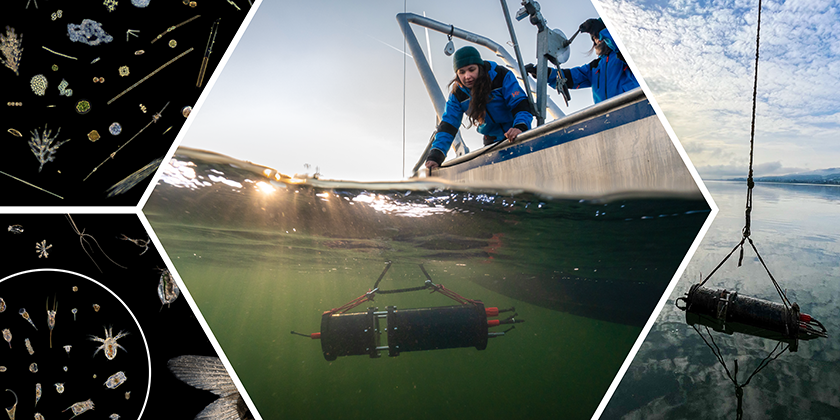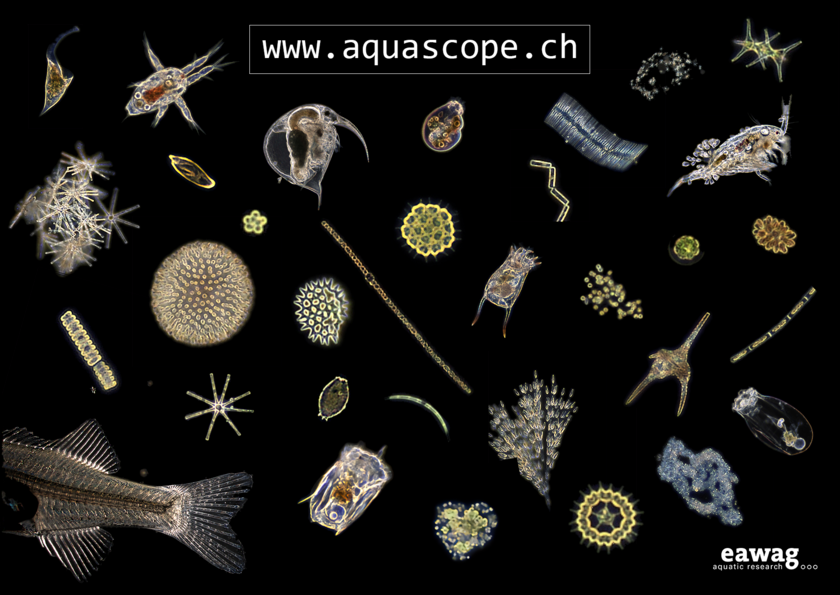Department Aquatic Ecology
Phytoplankton Ecology
Uncovering the secret life of plankton for a sustainable management of changing lakes
The mission of our research group is to explore plankton communities in their natural environment, explain their diversity, how they respond to environmental change, and ultimately how they affect aquatic ecosystem services. By pioneering innovative research methods and fostering interdisciplinary collaborations, we are committed to advancing the field of plankton ecology and elucidating the mechanisms that govern plankton dynamics, enabling us to forecast and mitigate the impacts of global change on lake ecosystems, including harmful algal blooms.
Plankton communities are at the basis of aquatic food webs, responding rapidly to environmental change and affecting the functioning and services (e.g. water quality, fisheries) of lake ecosystems. The large and dynamic biodiversity of plankton communities is iconic in ecology, and it is maintained by an intricate web of interactions between hundreds of species and their abiotic environment. Most of these interactions have been overlooked due to the limitations of traditional methods, which cannot provide data at the temporal (daily) and/or spatial (whole community) scale needed to elucidate plankton dynamics, including outbreaks of toxic cyanobacteria. Knowledge of how plankton species interact with each other and their natural environment and what conditions favour the dominance of a single taxon (or genotype), as in toxic cyanobacterial blooms, is essential to understand and predict what effects climate change, eutrophication and pollution will have on lake ecosystems.
Our research aims to:
- Map species interactions in complex and interconnected plankton communities, inferring population responses at different scales (from local to regional, from hours to decades). We use a trait-based perspective to link individual and population-level responses to community and ecosystem-level (food web) processes.
- Pioneer new approaches and technologies to advance plankton monitoring. We develop and integrate cost-effective high-frequency automated monitoring tools that can be deployed in situ, to innovate plankton and water quality monitoring in collaboration with local authorities. These include in situ imaging, sensors and DNA sequencing methods.
- Exploit historical time series of lake monitoring data, in collaboration with public authorities, to study the long-term effects of global change on plankton biodiversity and lake ecosystem processes.
- Develop data-driven models to understand and forecast changes in plankton biodiversity, cyanobacterial blooms, and water quality. We use advanced time series analysis methods and machine learning to mine large plankton datasets and reverse-engineer the mechanisms that drive community dynamics, including algal blooms.
- Provide public authorities with insights to support sustainable monitoring and management of rapidly changing lake ecosystems.
Our research group is diverse and multidisciplinary, with many local and international collaborations. We are committed to Open Research Data and FAIR principles. We embrace equity, diversity and inclusiveness by actively promoting equal opportunities for everyone and supporting the compatibility of private life and work. As people and scientists, we value differences in ideas, backgrounds, beliefs, genders, and opinions as the essence of creativity and fundamentals to personal and professional growth.
For more specific information browse the projects below or see our publication list on GoogleScholar.
Current Projects
Latest publications
Our researchers in action!
Join our group!
M.Sc. and B.Sc. students, and interns are always welcome. For more information, please contact Dr. Francesco Pomati.
















